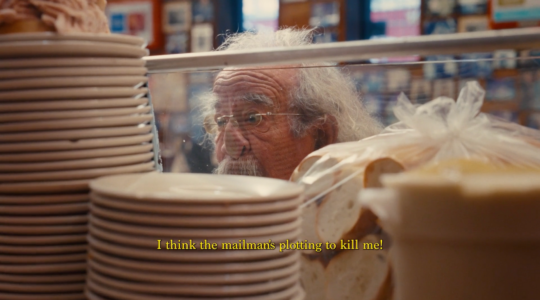When the Second World War broke out, the town of Sokal, then in Poland, had a population that included 6,000 Jews. By 1944, only 30 were still alive. Fifteen of them were being hidden in an attic and a hayloft over a pigsty by Francisca Halamajowa and her daughter Helena.
In a firestorm of hatred, the Halamajowas were a small wellspring of hope. But after the war, there was still enough fear and hostility that Francisca and Helena never told their story. Francisca’s granddaughters only learned the truth in full after they had moved to the United States decades later.
But the Jewish families they saved, and their descendants, knew the truth. Moshe Maltz kept a diary of those years, which his sons eventually got published, and Judy Maltz, his granddaughter, co-directed a film about the Halamajowas, “No. 4 Street of Our Lady,” which is playing this month on the Jewish Channel cable network. It is a striking testimonial to an extraordinarily selfless act, intelligently structured and quite handsome-looking.
As the film notes, Poles caught saving Jews faced execution, not only of themselves but also of their families. The Halamajowas were, quite simply, risking exposure by their neighbors, who would have received a bounty from the Nazis, and death. To maintain secrecy in the face of such danger required the total cooperation of the people they were hiding, a sort of conspiracy of courage.
Most documentary films about survivors returning to the remnants of their lives pre-Shoah are structured around what is no longer present. Usually, this is a cinema of absence, about the traces of a life, a culture and places that ceased to exist with the advent of the Nazis. By contrast, “No. 4” is about what remains, an intriguing and entirely appropriate difference. When members of the three families of Jews who were saved by the Halamajowas return to Sokal, they are surprised, and not a little shaken, to find the house, the pigsty, hayloft and attic still intact, much as they remembered it. More disturbing, they also discover that the abandoned brick factory in which the Nazis carried out mass executions of Jews is also still there.
As a result, “No. 4” is a Holocaust documentary with a subtle but very real difference, its structure combining the present with memory in a way that most such films cannot. Moshe’s diary serves as an off-screen promptbook essential to recreating the story with an immediacy that 60-year-old memories cannot always provide. At the same time, though, the men and women who were once the children Francisca and her daughter saved are able to fill in the sort of details that only children would recall. Consequently, the fabric of memory of which the film is made is richly layered, a palimpsest that reflects a multiplicity of viewpoints. Happily, the Maltzes, Kindlers and Krams — the three families whose members were saved — are articulate, frank and remarkably open to the emotional pummeling that such memories must produce.
In his controversial book “Hitler’s Willing Executioners,” Daniel Goldhagen invokes the useful concept of a “microphysics of mass murder.” “No 4. Street of Our Lady” is a film that offers a counter-concept, regretfully not as widespread, but a significant reminder that the human capacity for goodness is not extinguished in even the worst of times. Call it, if you will, a microphysics of hope.
“No. 4 Street of Our Lady,” directed by Barbara Bird, Judy Maltz and Richie Sherman, is playing on the Jewish Channel. For information, go to www.tjctv.com.
|
Signup for our weekly email newsletter here. Check out the Jewish Week’s Facebook page and become a fan! And follow the Jewish Week on Twitter: start here. |
The New York Jewish Week brings you the stories behind the headlines, keeping you connected to Jewish life in New York. Help sustain the reporting you trust by donating today.




